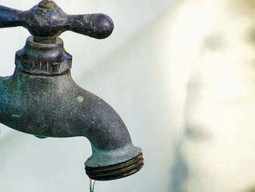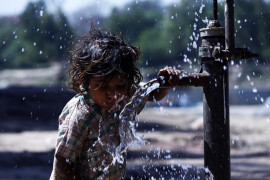
ISLAMABAD: Water supply and storage does not seem to be among top priorities of the government as despite facing acute shortages, the utilisation of funds on water projects has gone down.
In the current fiscal year 2016-17, the government has allocated Rs31.72 billion for development schemes in the water sector, but only around Rs24 billion, or 76% of the total, would be utilised by the end of June, reveals the Annual Plan 2017-18 released on Friday.
The ruling PML-N government has not only delayed the release of funds for water projects designed to enhance the country’s storage capacity, but it has also cut fund allocation substantially since coming to power about four years ago.
Its focus has primarily been on road infrastructure and metro bus projects and has pushed water schemes among less priority areas.
After coming to power in mid-2013, the government earmarked Rs59 billion for fiscal year 2013-14 to be disbursed among different projects aimed at conserving and enhancing the country’s water resources. However, out of the total, only Rs35 billion could be spent as the government slowed down the release of funds.
In 2015-16, the allocation for water projects was slashed by around 50% to Rs30.12 billion. However, only Rs23 billion was disbursed for injection into the schemes.
In the next fiscal year, almost a similar amount, Rs31.06 billion, was set aside for water schemes, but only Rs24 billion would be released by the end of the year.
For the upcoming fiscal year 2017-18, a slightly higher amount estimated at Rs36.7 billion has been earmarked for water projects.
Pakistan is fast becoming a water-stressed country with dearth of storages and India’s plan to build more dams on rivers coming to Pakistan.
No workable water management policy has been put in place and farmers are forced to consume groundwater with the help of tube wells to irrigate their crops, which inflates power consumption bills.
In order to vent their anger, the farmers staged a protest in Islamabad on Friday before the unveiling of budget for 2017-18 to invite attention to their plight as the government seemed to have relegated the agriculture sector to less priority areas.
In the previous fiscal year, the agriculture sector did not grow, falling far short of the target, which had a negative impact on the overall national economic growth. In the current fiscal year, however, the agriculture sector grew 3.46% - its highest level in the past five years.
In the new budget, the government has increased agriculture credit target by 43% to Rs1.001 trillion and has announced loans of Rs50,000 for small farmers.
Still, it has paid more attention to the manufacturers and industrialists, which are even getting loans at low interest rates whereas the farmers are compelled to bear high interest costs.
Among the industrialists, fertiliser manufacturers and sugar millers have got billions in government subsidy, but its benefits have hardly trickled down to the farmers.
Some officials warn Pakistan will face energy and food security challenges in future as the government has scant interest in water supply projects, which are closely related with agriculture production that needs water as a major input.
Pakistan has been facing flood devastation for the past seven years, but calls for building more water reservoirs have fallen on deaf ears. At present, water storage capacity of the country is 14 million acre feet (MAF) whereas annual consumption stands at 117 MAF.
“Consumption of 1 MAF of water has a positive impact of $1 billion on the economy; this way Pakistan has been losing billions every year because of water wastage as reservoirs are not too many,” an official said.
There are only two major dams - Tarbela and Mangla. The former was built in 1977 and its storage capacity has dropped to 6.4 MAF against earlier 9.4 MAF. However, Mangla’s capacity has been enhanced by 3 MAF to 7.4 MAF following a structure raising project.
Published in The Express Tribune, May 28th, 2017.
Like Business on Facebook, follow @TribuneBiz on Twitter to stay informed and join in the conversation.























































COMMENTS (2)
Comments are moderated and generally will be posted if they are on-topic and not abusive.
For more information, please see our Comments FAQ